| |
Cryptocoryne edithiae de Wit |
| (Document service) |
In 1978, Edith Korthaus collected an unknown Cryptocoryne in Central
Kalimantan. When the plant was flowered by Friedrich Möhlmann in
Germany, it turned out to be a new species. The plant disappeared very soon from
cultivation due to insufficient cultivation techniques. In the past decade, three more
collections of plants were made in Kalimantan by Yuji Sasaki and Hiroyuki Kishi which
should be regarded as C. edithiae. The spathe of the plant is characterized by a
rough brown-purple limb and a yellow throat with many fine red dots, slightly different in
the four accessions. In its appearance the plant is related to C. cordata var. grabowskii, a very common Cryptocoryne in Kalimantan. Three accessions
of C. edithiae show rather defect pollen and there are no fruits known,
what may indicate that C. edithiae is of hybrid origin. The fourth accession
(I-SAKK1) is not in cultivation. The chromosome numbers for the plants however differ:
Korthaus' plant had 2n = 68 (Arends et al 1982), the two others have 2n = 51 (Jacobsen
unpublished), the fourth is unknown till now. C. edithiae can best be interpreted
as a complex of hybrids where different parents may be involved, to be compared with C. ´purpurea nothovar. borneoensis. In
Copenhagen DNA analysis is underway (Jacobsen priv. comm.).
Click on the picture to get the full image (ca. 50 kB) |
 |
Sterile plants collected in 1978 by Edith Korthaus 'four boat
hours' North of Sampit. The plant grows in a 'black water' stream, with a pH of about 4.
coll. Korthaus s.n.
photo Korthaus |
|
 |
Spathe of C. edithiae. The purple limb is rather
rough (compared for example to C. cordata). There is a more or less pronounced
collar, and there are fine red dots in the throat.
coll. Korthaus s.n., cult. Möhlmann M 52
photo Möhlmann
|
|
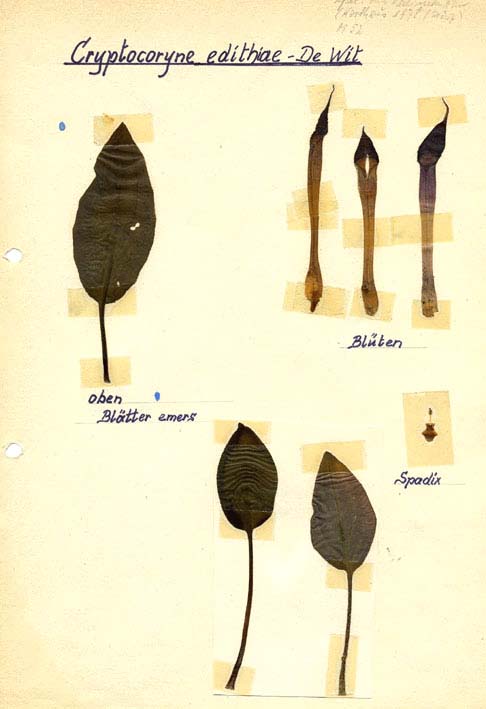 |
Herbarium sheet of Möhlmann's
cultivated C. edithiae. Sheet size ca. 20 x 30 cm.
coll. Korthaus s.n., cult. Möhlmann M 52
photo Jacobsen |
|
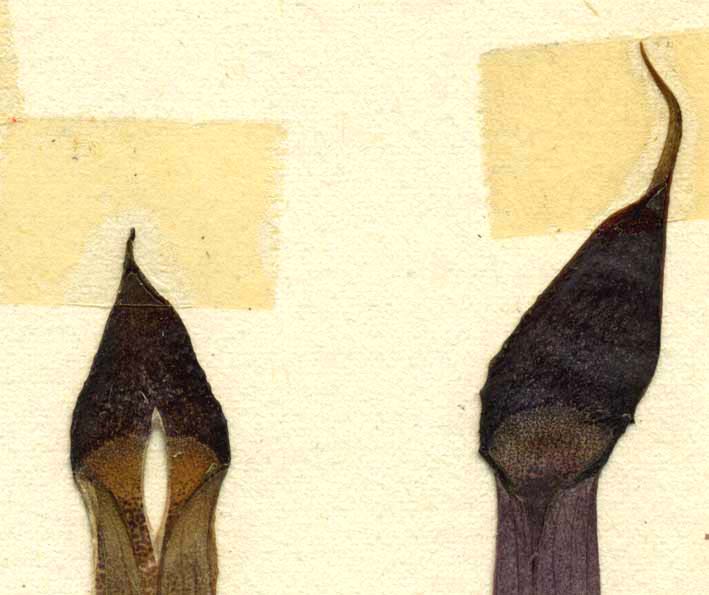 |
Detail of of the herbarium sheet. Note the fine red dots in
the throat.
coll. Korthaus s.n., cult. Möhlmann M 52
photo Jacobsen
|
|
| |
|
|
|
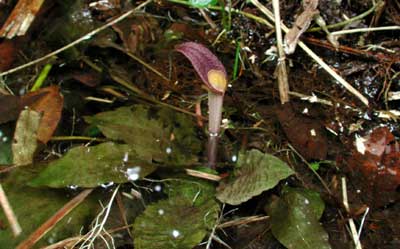 |
Flowering C. edithiae near
Kotawaringin, West Kalimantan. Note the slight bullate leaves. In (my) cultivation the
leaves remain bullate and may become brownish with a reddish lower side.
coll. Sasaki I-KOTT
photo Sasaki
|
|
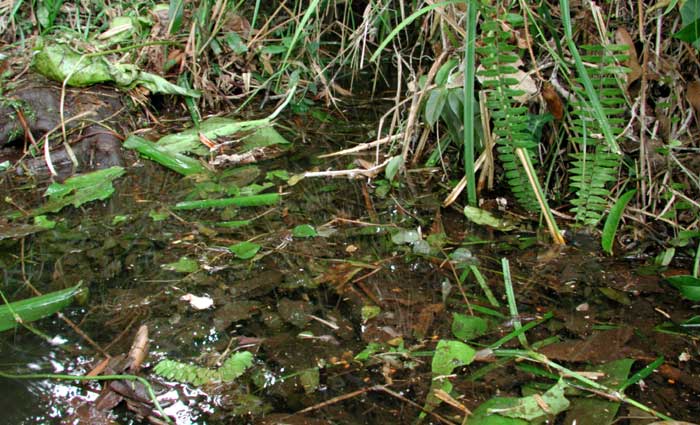 |
Habitat near Kotawaringin.Sasaki mentions water parameters of
pH = 5.0 and a TDS of 6 ppm.
coll. Sasaki I-KOTT
photo Sasaki
|
|
 |
The limb of the I-KOTT spathe often has one or two furrows.
coll. Sasaki I-KOTT, cult. B 960
|
|
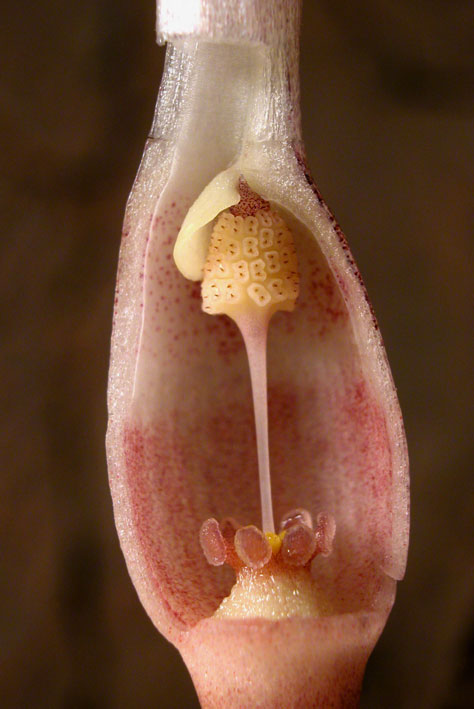 |
The kettle is rather short in I-KOTT. The inside wall may be
reddish but is often white with only a few red dots near the male flowers. The appendix
varies from white with a few purple spots to purple.
coll. Sasaki I-KOTT, cult. B 960
|
|
| |
|
|
|
 |
Flowering C. edithiae near Sukamara.
coll. Kishi TB06-1
photo Kishi
|
|
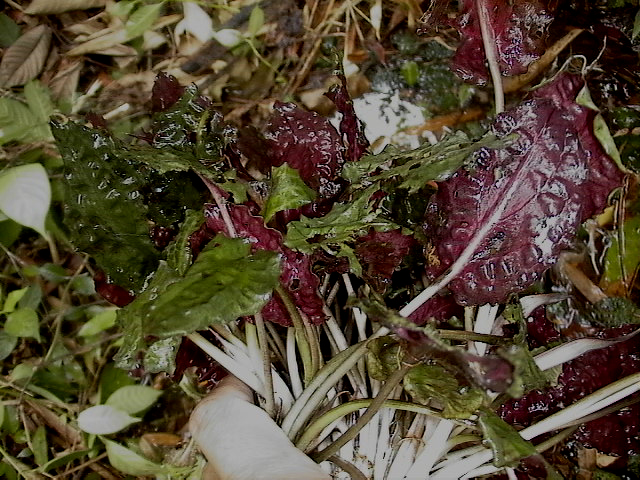 |
The lower side of the leaves are deep purple.
coll. Kishi TB06-1
photo Kishi
|
|
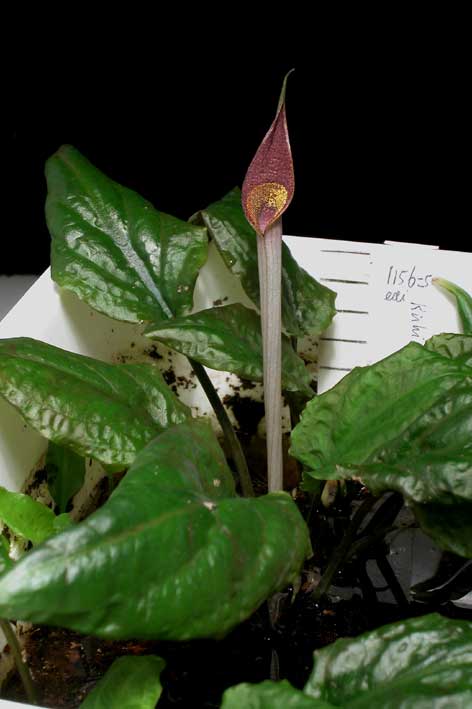 |
In (my) cultivation the leaves are bright green with a pale
green lower side. Hardly bullate leaves.
coll. Kishi TB06-1, cult. B 1156
|
|
 |
The red spots in the throat are distinct bigger than in the
I-KOTT plant.
coll. Kishi TB06-1, cult. B 1156
|
|
| |
|
|
|
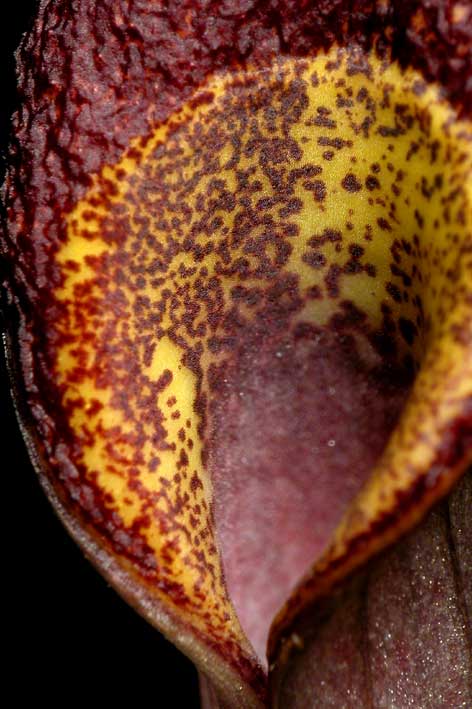 |
Often the spots are not uniform spread in
Kishi's plant.
coll. Kishi TB06-1, cult. B 1156
|
|
 |
Small regular distributed dots in Sasaki's I-KOTT plant.
coll. Sasaki I-KOTT, cult. B 960
|
|
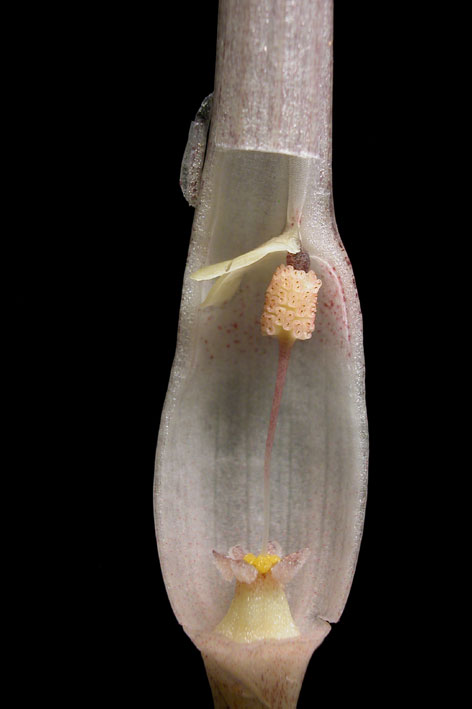 |
Kishi's plant has a slight longer kettle with only a few red
dots in the top.
coll. Kishi TB06-1, cult. B 1156
|
|
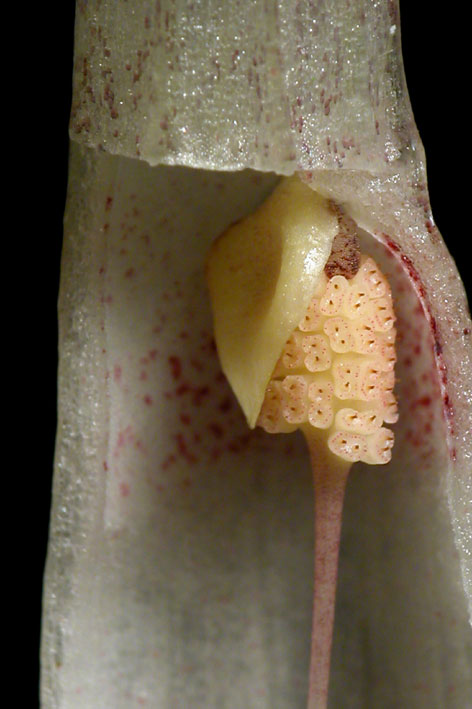 |
Close up of the top of the spadix.
coll. Kishi TB06-1, cult. B 1156
|
|
| |
|
|
|
 |
Another collection by Sasaki of what is also
regarded as C. edithiae, with a more pronounced collar. Water parameters pH = 4.9
and a TDS of 4 ppm. Not in cultivation.
coll. Sasaki I-SAKK1
photo Sasaki
|
|
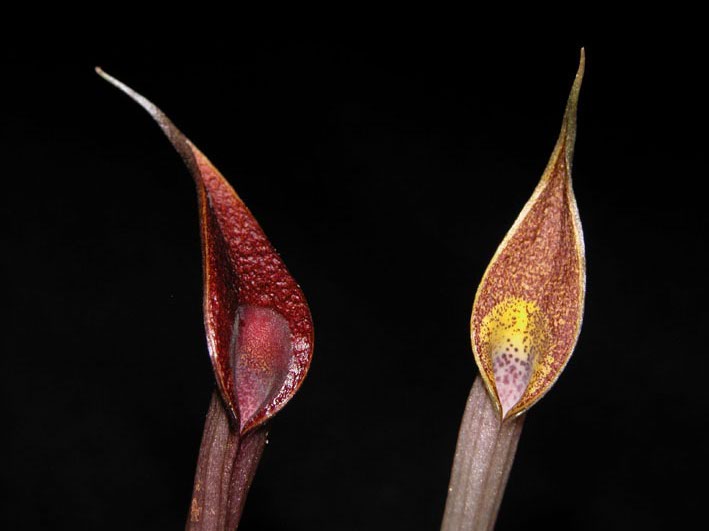 |
No doubt strong related plants:
left C. ´purpurea nothovar. borneoensis,
right C. edithiae.
coll. Idei B-02 & Kishi TB06-1,cult. Jacobsen
photo Jacobsen
|
|
 |
Habitus of C. edithiae (de Wit 1990) drawn after the
Korthaus plant.
drawing Y.F. Tan
|
|
 |
Distribution of C. edithiae in Southern Kalimantan
(Indonesia). The plants grow in the peat swamp forest.
|
|
| |
|
|
|
The South of Kalimantan is to date one of the most intriguing parts of Asia in respect
to Cryptocoryne. It proves to be very difficult to set taxonomic boundaries
between all new collected plants, for it seems that there is an almost continuous
variation in characters in species like C. cordata var. zonata, C. cordata var. grabowskii, C. ´purpurea nothovar. borneoensis and C. edithiae.
Cultivation finally turned out to be extremely easy. One to two year old leaves of the
in W. Europe common beech tree (Fagus sylvatica) are soaked in water (rain /
reversed osmose) for a few weeks, cleaned and drained and soaked again for a few weeks.
The plants are loosely stuck in a 3-5 cm thick layer of these more or less floating,
slowly decaying leaves. Water parameters soon become around a pH of 3.5, and an EC of 50
muS/cm. Fertilizing after some months is simply done by adding some new Fagus leaves. It will take a year before the plants are firmly growing but afterwards one must
take care that the container does not become overcrowded because of competition for
nutriments. The same competition makes it inappropriate to have more than one species in
one container. Probably only one species will survive.
Updated May 2008 |
Literature:
- Arends, J.C., Bastmeijer, J.D. & Jacobsen, N., 1982.
Chromosome numbers and taxonomy in Cryptocoryne (Araceae).II. Nord.J.Bot. 2 : 453-463.
- Bogner, J., 1984. Cryptocoryne edithiae De Wit. Das Aquarium 185 : 564-566. (Document service)
- Bogner, J., 1985. Cryptocoryne edithiae De Wit. Aqua-Planta 4-85 : 17-19.
- Eggers, G., 1987. Edith Korthaus. Aqua-Planta 2-87 : 74.
- Graaf, A.de, 1983. Sadilek over vindplaatsen van Cryptocorynen. Het Aquarium 53(2) :
51-53.
- Jacobsen, N., 1985. The Cryptocoryne (Araceae) of Borneo. Nord.J.Bot. 5 : 31-50.
- Korthaus, E., 1980. Beobachtungen an Cryptocorynen auf Borneo. Das Aquarium 133 : 342-343.
- Möhlmann, F., 1978. Eine rätselhafte Cryptocoryne von Borneo. Das Aquarium 12/7 :
397-400.
- Sasaki, Y., Minima Vol.3, 2003. Pisces Publishers Co Ltd, Japan.
- Wit, H.C.D.de, 1990. Aquarienpflanzen, 2. Auflage. Ulmer, Stuttgart. ISBN 3-8001-7185-6.
|
|
|
|
 |
|
|